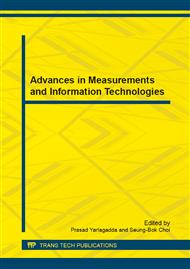p.915
p.919
p.928
p.932
p.936
p.943
p.952
p.956
p.960
Fast and Effective Congestion Refinement Technique
Abstract:
Due to the promotion of modern design feature, the placement solution is becoming more and more difficult to route. Previous routability-driven based technology is usually coupled with the original placer, which is difficult to be widely used in various placement tools. In this paper, we proposed a tool called CRT (Congestion Refinement Technique), which is independent of any placer and any router, and can be applied to various placemen to improve the routability. CRT is a congestion-driven based module shifting technique. Basically, CRT is one kind of technology that better allocating routing resources by shifting the modules. The boundary of tile is shifted in the horizontal and vertical directions without affecting the original placement. Here a longest path solution is presented to solve the problem fast and effectively. The experimental results show that the CRT can effectively alleviate the congestion of unroutable placement solutions. We apply it to placement solutions generated by placers on ISPD2011 [ placement benchmarks. From the result we can see that CRT greatly improves the routbility and saves execution time for the routing stage after refinement.
Info:
Periodical:
Pages:
936-942
Citation:
Online since:
February 2014
Authors:
Keywords:
Price:
Сopyright:
© 2014 Trans Tech Publications Ltd. All Rights Reserved
Share:
Citation:


